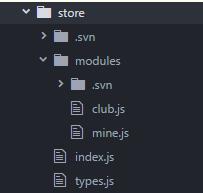Python遠程方法調用實現過程解析
RPCHandler 和 RPCProxy 的基本思路是很比較簡單的。 如果一個客戶端想要調用一個遠程函數,比如 foo(1, 2, z=3) ,代理類創建一個包含了函數名和參數的元組 (‘foo’, (1, 2), {‘z’: 3}) 。 這個元組被pickle序列化后通過網絡連接發生出去。 這一步在 RPCProxy 的 getattr() 方法返回的 do_rpc() 閉包中完成。
服務器接收后通過pickle反序列化消息,查找函數名看看是否已經注冊過,然后執行相應的函數。 執行結果(或異常)被pickle序列化后返回發送給客戶端。實例需要依賴 multiprocessing 進行通信。 不過,這種方式可以適用于其他任何消息系統。例如,如果你想在ZeroMQ之上實習RPC, 僅僅只需要將連接對象換成合適的ZeroMQ的socket對象即可。
先實現server端
import jsonfrom multiprocessing.connection import Listenerfrom threading import Threadclass RPCHandler: def __init__(self): self._functions = {} def register_function(self, func): self._functions[func.__name__] = func def handle_connection(self, connection): try: while True:func_name, args, kwargs = json.loads(connection.recv())# Run the RPC and send a responsetry: r = self._functions[func_name](*args, **kwargs) connection.send(json.dumps(r))except Exception as e: connection.send(json.dumps(e)) except EOFError: passdef rpc_server(handler, address, authkey): sock = Listener(address, authkey=authkey) while True: client = sock.accept() t = Thread(target=handler.handle_connection, args=(client,)) t.daemon = True t.start()# Some remote functionsdef add(x,y): return x+yif __name__ == ’__main__’: handler = RPCHandler() handler.register_function(add) # Run the server rpc_server(handler, (’127.0.0.1’, 17000), authkey=b’peekaboo’)
再實現client端
import jsonfrom multiprocessing.connection import Clientclass RPCProxy: def __init__(self, connection): self._connection = connection def __getattr__(self, name): def do_rpc(*args, **kwargs): self._connection.send(json.dumps((name, args, kwargs))) result = json.loads(self._connection.recv()) if isinstance(result, Exception):raise result return result return do_rpcif __name__ == ’__main__’: c = Client((’127.0.0.1’, 17000), authkey=b’peekaboo’) proxy = RPCProxy(c) res = proxy.add(2, 3) print(res)
以上就是本文的全部內容,希望對大家的學習有所幫助,也希望大家多多支持好吧啦網。
相關文章:

 網公網安備
網公網安備